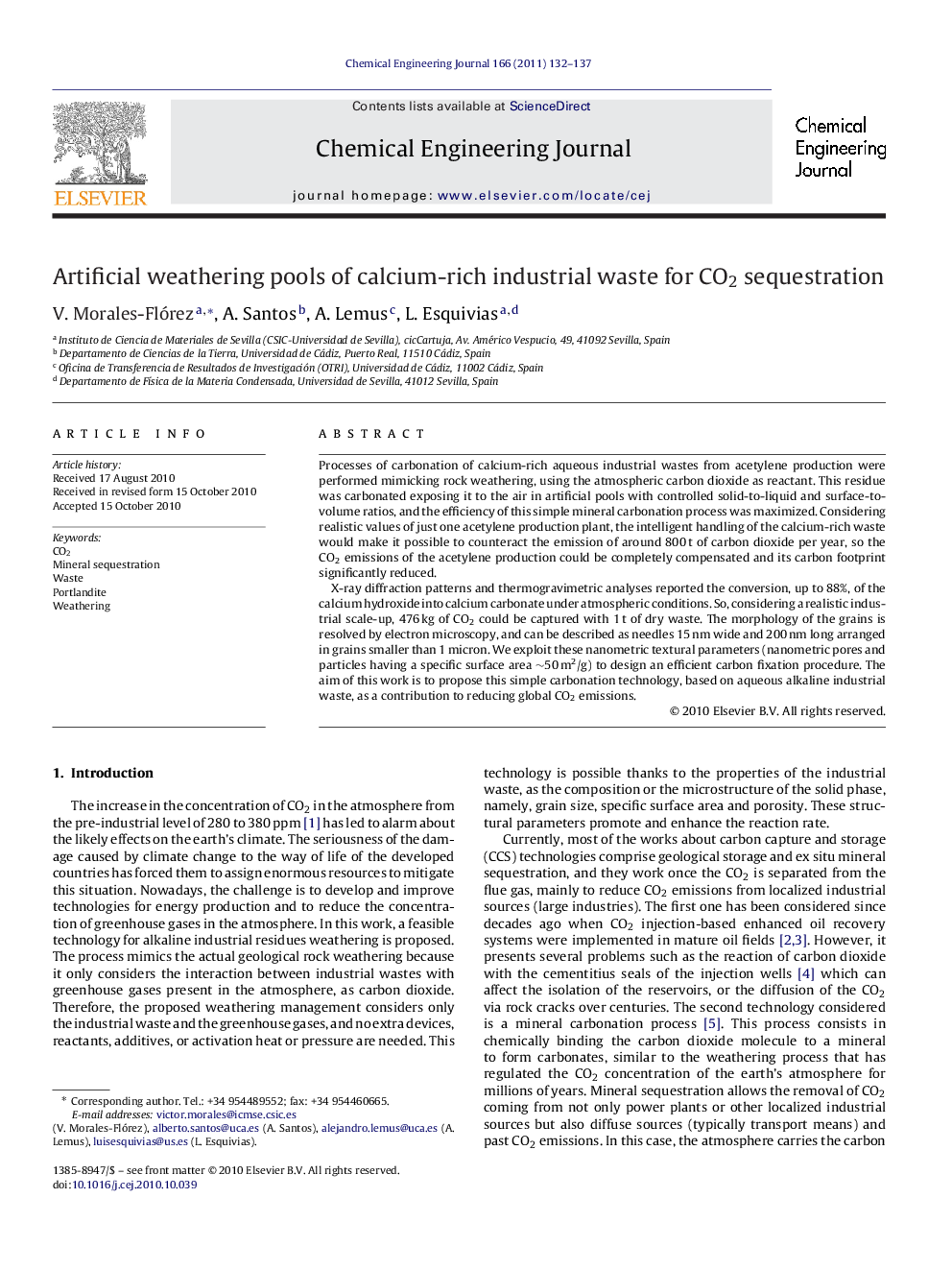| Article ID | Journal | Published Year | Pages | File Type |
|---|---|---|---|---|
| 151775 | Chemical Engineering Journal | 2011 | 6 Pages |
Processes of carbonation of calcium-rich aqueous industrial wastes from acetylene production were performed mimicking rock weathering, using the atmospheric carbon dioxide as reactant. This residue was carbonated exposing it to the air in artificial pools with controlled solid-to-liquid and surface-to-volume ratios, and the efficiency of this simple mineral carbonation process was maximized. Considering realistic values of just one acetylene production plant, the intelligent handling of the calcium-rich waste would make it possible to counteract the emission of around 800 t of carbon dioxide per year, so the CO2 emissions of the acetylene production could be completely compensated and its carbon footprint significantly reduced.X-ray diffraction patterns and thermogravimetric analyses reported the conversion, up to 88%, of the calcium hydroxide into calcium carbonate under atmospheric conditions. So, considering a realistic industrial scale-up, 476 kg of CO2 could be captured with 1 t of dry waste. The morphology of the grains is resolved by electron microscopy, and can be described as needles 15 nm wide and 200 nm long arranged in grains smaller than 1 micron. We exploit these nanometric textural parameters (nanometric pores and particles having a specific surface area ∼50 m2/g) to design an efficient carbon fixation procedure. The aim of this work is to propose this simple carbonation technology, based on aqueous alkaline industrial waste, as a contribution to reducing global CO2 emissions.
